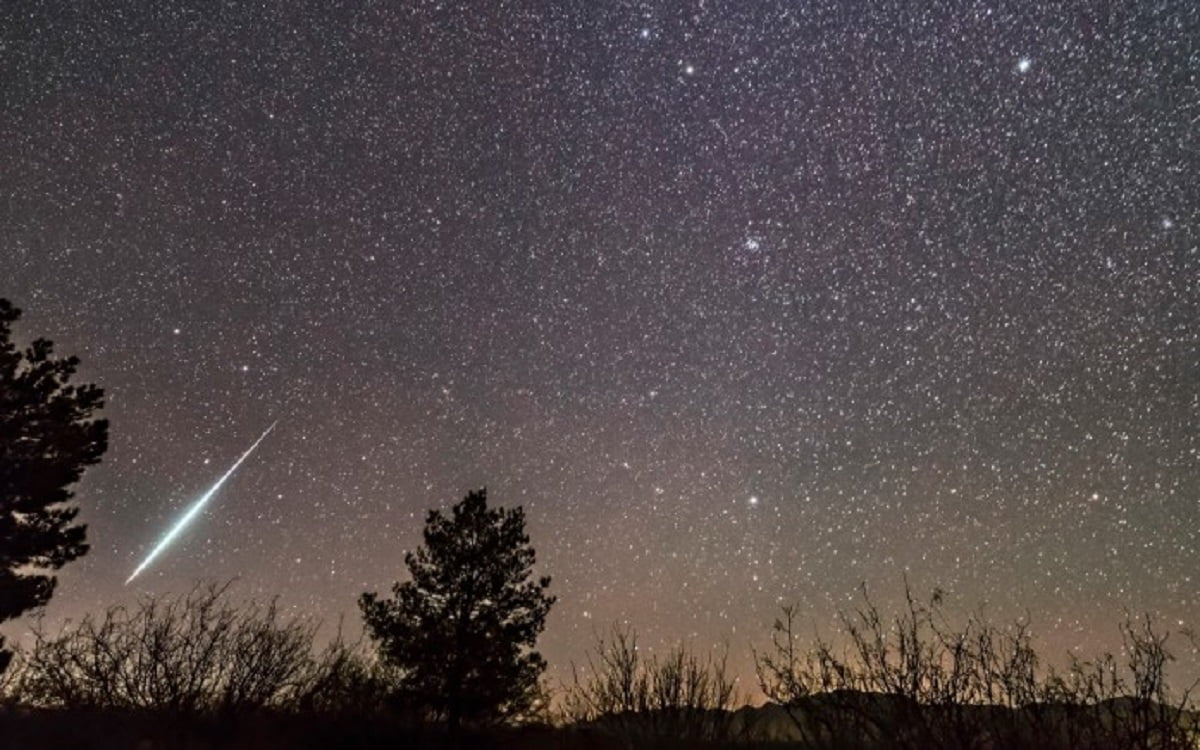The night sky is set to come alive with the dazzling display of the Geminids meteor shower, one of the most anticipated celestial events of the year. With the potential to witness over 120 shooting stars per hour under optimal conditions, skywatchers are in for a treat. In this article, we’ll explore the enchanting world of the Geminids, from their unique characteristics to the science behind these celestial wonders.

What is the Geminids Meteor Shower?
NASA has bestowed the honor of being one of the best meteor showers upon the Geminids. Renowned for their brightness and speed, these meteors often exhibit stunning colors, including shades of yellow, green, red, and even blue. The Geminids have been active since late November, culminating in a peak expected Wednesday night into early Thursday.
Ideal Conditions for Viewing
To fully appreciate the beauty of the Geminids, clear weather and minimal moonlight are crucial. Escape the confines of light pollution by finding a vantage point away from city lights. For the best experience, recline with your feet facing south, allowing your eyes to adjust to the dark for around 30 minutes.
Where and When to See the Geminids
Geminids are a global spectacle, visible from anywhere in the world. The meteors seem to radiate from the Gemini constellation, rising in the northeastern sky. Discover the best vantage points for an unobstructed view and the recommended timeframes for an awe-inspiring sky show.
Viewing Tips for the Geminids
Positioning is key for optimal viewing. Learn the art of stargazing by lying down or sitting back and prepare for a chilly winter night if you’re in the Northern Hemisphere. The peak activity starts around 9 p.m. or 10 p.m. local time, but the late-night hours may offer an even more impressive display.
The Science Behind Meteor Showers
Meteor showers occur when Earth passes through debris clouds left behind by comets or asteroids. These particles vaporize upon entering the atmosphere, creating fast-moving streaks of light across the sky. The Geminids, in particular, originate from asteroid 3200 Phaethon, a small space rock discovered in 1983.
3200 Phaethon: The Source of the Geminids Explore the fascinating details of asteroid 3200 Phaethon, its characteristics, and the connection between this celestial body and the Geminids meteor shower. Learn about its orbit duration and size, enhancing your understanding of this cosmic phenomenon.
The Extended Duration of Geminids While the peak of the Geminids is anticipated this week, the meteor shower will continue its mesmerizing display until December 24. Discover the implications for skywatchers and how they can continue to enjoy the celestial spectacle after the peak.
Benefits of Viewing the Geminids Beyond the aesthetic pleasure, witnessing the Geminids has educational value. Appreciate the beauty of celestial events and create lasting memories through the art of stargazing.
Conclusion
In conclusion, the Geminids meteor shower offers a celestial spectacle that captivates and inspires. With its peak approaching, now is the perfect time to experience the magic of shooting stars streaking across the night sky. Don’t miss this opportunity to connect with the cosmos and create memories that will last a lifetime.
Tom Cruise Sparks Romance Rumors with Socialite Elsina Khayrova 2023
FAQs – Geminids Meteor Shower 2023
- Q: Can I see the Geminids from any part of the world? A: Yes, the Geminids meteor shower is visible globally.
- Q: Do I need any special equipment to view the meteor shower? A: No, the naked eye is sufficient. Find a dark spot away from city lights for the best experience.
- Q: What causes the different colors of Geminid meteors? A: The colors result from the composition of the particles in the debris cloud.
- Q: Why is the Geminids meteor shower considered one of the best? A: Geminids are bright, fast, and have a higher frequency, making them a spectacular annual event.
- Q: Can I still see the Geminids after the peak week? A: Yes, the meteor shower remains active until December 24, allowing for continued stargazing.